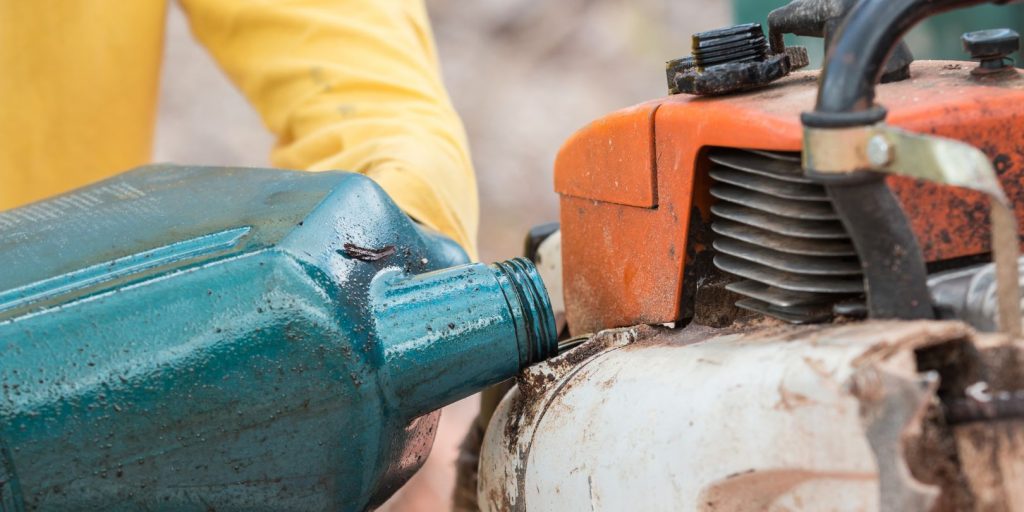Chainsaw Oiling, Sharpening, and Other Maintenance Basics

A chainsaw is a potent ally for tackling challenging tasks, but its reliability hinges on diligent care and maintenance. Whether you’re entirely new to woodworking or need a reminder on upkeep, this article’s purpose is to provide you with the knowledge you need to know. Beyond refueling, chainsaw upkeep involves vital tasks such as chain sharpening, proper oiling, and ensuring safety precautions are checked. Keeping your chainsaw maintained reduces strain on the engine and minimizes the risk of dangerous kickbacks. Additionally, understanding correct oiling techniques is pivotal for smooth, heat-free operation. In this comprehensive guide, we’ll explore the indispensable maintenance practices every chainsaw owner must grasp.
Oiling the Chain
Proper lubrication is crucial for a chainsaw’s chain and bar. Most chainsaws have an automatic oiling system, but it’s essential to check the oil level regularly. Insufficient lubrication can lead to overheating, increased friction, and premature wear of the chain and bar.
To maintain the right oil level, use high-quality bar and chain oil designed specifically for chainsaws. Fill the oil reservoir when it’s about two-thirds empty, and always do this before each cutting session. Additionally, clean the oil ports and the chain groove to ensure a consistent flow of oil to the chain.
Chain Sharpening
A sharp chain is not only more efficient but also safer to use. Dull chains require more effort to cut and can result in kickbacks. Regular chain sharpening is essential for maintaining cutting performance.
You can sharpen the chain yourself using a round file and a file guide, or you can invest in a chainsaw sharpener for more convenience. Follow the manufacturer’s recommendations for the right file size and angle, and ensure that each tooth is sharpened evenly. A well-sharpened chain should easily cut through wood with minimal effort.
Cleaning the Air Filter
A clean air filter is essential for the engine’s performance. Chainsaws are often used in dusty and debris-filled environments, so the air filter can become clogged over time.
Remove the air filter cover, take out the filter, and clean it with warm, soapy water. Allow it to dry thoroughly before reinserting it. Regularly inspect the air filter, and if it’s severely damaged or worn, replace it with a new one.
Fuel Mixture and Storage
Using the correct fuel mixture is crucial for two-stroke chainsaws. Always refer to the manufacturer’s recommendations for the right mix of gasoline and two-stroke oil. Using the wrong mixture can damage the engine.
When storing your chainsaw for an extended period, empty the fuel tank or use a fuel stabilizer to prevent the fuel from deteriorating and clogging the carburetor. Store the chainsaw in a cool, dry place away from direct sunlight. This advice does not apply to electric chainsaws.
Chain Tension
Proper chain tension is essential for safe and efficient cutting. A loose chain can come off the bar, while an overly tight chain can damage the bar and sprocket.
Before each use, check the chain tension. It should be snug against the bar but still movable by hand. Use the chainsaw’s tensioning mechanism to adjust as needed. Remember to recheck the tension after a few minutes of operation as the chain can stretch when it heats up.
Safety Inspection
Prior to each use, conduct a safety inspection of your chainsaw. Check for loose bolts, damaged or worn parts, and ensure that all safety features, including the chain brake, throttle lockout, and trigger interlock, are functioning correctly.
Inspect the chain catcher, which is designed to reduce the risk of the chain flying off the bar. If it’s damaged, replace it immediately. Also, ensure that the chain catcher is not excessively worn.
Regular Maintenance Schedule
Create a regular maintenance schedule for your chainsaw, including oiling, sharpening, and safety inspections. Keeping a log of maintenance activities can help you stay organized and ensure that no crucial tasks are overlooked.
By following these maintenance basics, you’ll not only prolong the lifespan of your chainsaw but also enhance its safety and performance. Regular upkeep not only saves you money on repairs but also ensures that your chainsaw is always ready to tackle your outdoor projects effectively and efficiently.
Fuel Mixture and Storage
If you have a gas-powered chainsaw, always use the recommended fuel mixture specified in the manufacturer’s manual. Stale or improperly mixed fuel can damage the engine. When storing your chainsaw for an extended period, drain the fuel tank and run the engine until it stalls to prevent fuel buildup that can clog the carburetor.
Safety First
Above all, prioritize safety. Always wear appropriate safety gear, including eye protection, hearing protection, gloves, and sturdy clothing. Familiarize yourself with the chainsaw’s safety features and proper handling techniques. Regular maintenance not only enhances the chainsaw’s performance but also ensures safe operation.
Conclusion
Owning a chainsaw comes with the responsibility of proper maintenance. By following these essential maintenance practices, including chain oiling, sharpening, air filter cleaning, spark plug inspection, and more, you can ensure your chainsaw performs at its best and lasts for years to come. Remember that chainsaw maintenance not only enhances efficiency but also promotes safety, allowing you to tackle your cutting tasks with confidence and precision.
